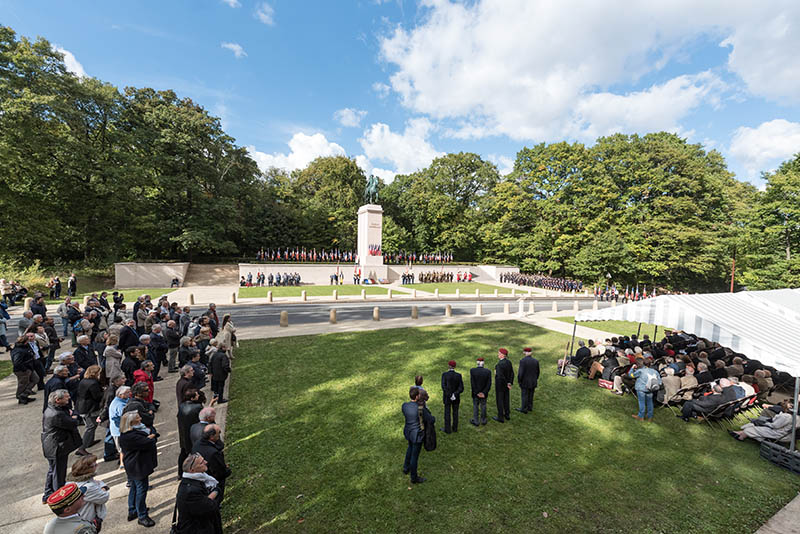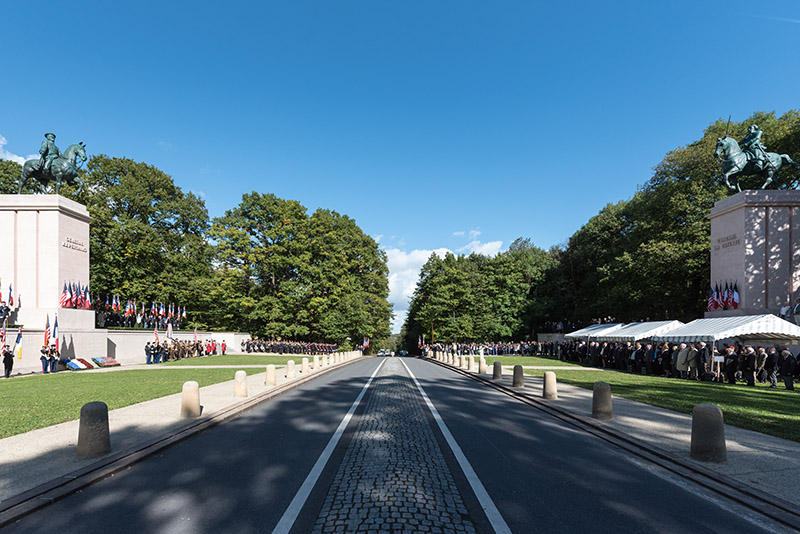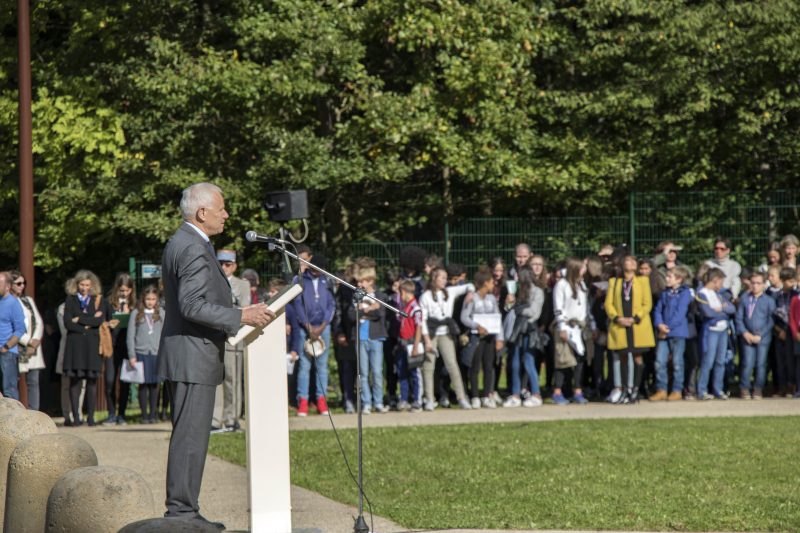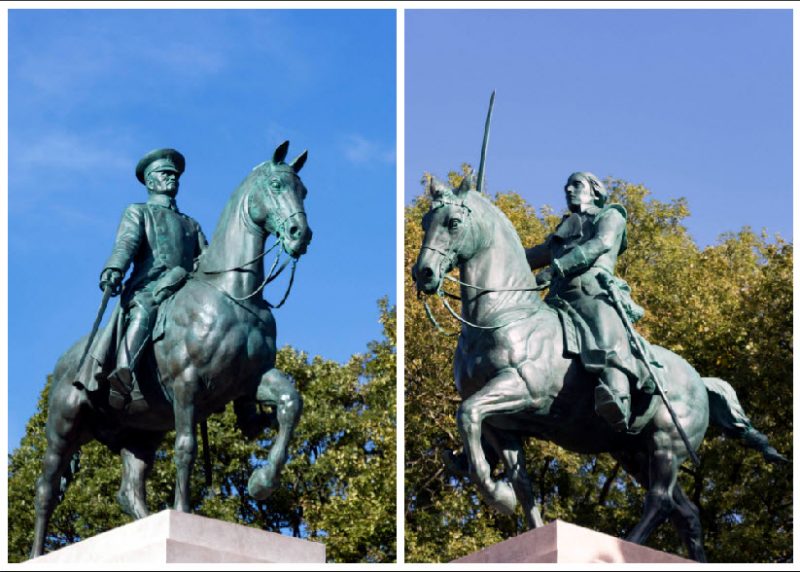Today, November 11, marks the commemoration of Armistice Day in France.
Ninety-nine years ago, World War I ended when the Allies and Germany signed an agreement to cease hostilities. The United States declared war on Germany on April 6, 2017 and its first troops landed in France on June 25 of that year. Commanded by General John Joseph Pershing, the American Expeditionary Force provided men and material that tipped the balance of power on the battlefield, ultimately forcing Germany’s surrender on November 11, 1918.
In 1937, twenty years after the arrival of American troops, a grateful French nation celebrated the event in a ceremony held in the town of Versailles. There, on the Butte de Picardie, General Pershing and President of the French Republic Albert Lebrun inaugurated two equestrian statues mounted on tall pedestals, one of the general and the other of the Marquis de La Fayette, French hero of the American Revolution. Facing each other across a roadway, the statues symbolized the friendship of two nations that had come to each other’s aid in times of need: France providing military support during the American Revolution and the United States reciprocating during World War I.
The pedestals were solid, but the statues, erected in haste, had been made out of plaster painted with bronze patina. The idea was to replace the ersatz statues with bronze as soon as sufficient funds could be raised. But delays occurred, including the German occupation of the country during the Second World War, preventing the replacement of the plaster statues. By 1941, they had become so severely weathered that they were removed from the pedestals.
Following World War II, attempts were made to raise sufficient funds to place bronze statues of Pershing and La Fayette on the denuded pedestals. Efforts focused on raising funds to cast a bronze statue of General Pershing and to install an already existing bronze statue* of La Fayette. Plans were thwarted, however, because the post-war French government needed funds to rebuild the country and simply could not afford such an expensive enterprise. Efforts to find financial support for the project continued throughout the years, but it was not until recently that monies could be raised.
On October 6, 2017, I attended the ceremony of the inauguration of two new equestrian statues** of Pershing and La Fayette on their pedestals at Butte de Picardie. The funds to cast the statues had finally been raised by private subscription and the city of Versailles spared no effort to make their inauguration a special occasion. French and American color guards flanked the statue of General Pershing, while on the other side of street, called avenue des Etats-Unis, VIPs observed the ceremony from under a large tent placed in front of the statue of the Marquis La Fayette.
Among the speakers who hailed the occasion was Brent Hardt, Chargé d’Affaires of the United States Embassy. After his discourse, musicians from the Fondation pour le Rayonnement de la Trompe Musicale played God Bless America on their hunting horns. Other speakers included Monsieur Schmitz, Regional Delegate of Ile-de-France for the Foundation of Patrimony, and Monsieur Martin, President of the Pershing-Lafayette Association. The mayor of Versailles, Monsieur François de Mazières, gave a speech and presented medals.
Following the speeches, local high-school students read letters written by World War I soldiers and sang songs, including the British World War I song It’s a Long Way to Tipperary. An emotional speech by American Colonel Charles E. Stanton was recalled. On July 4, 1917, Stanton stood at the grave of the Marquis La Fayette in Paris and called out, “La Fayette, we are here!” His remark was a poignant reminder of the esteem that Americans hold for La Fayette and for the gratitude that they feel towards the French for their support of the American insurgents during the War of Independence.

View of the Inauguration of the Pershing-La Fayette Monument from the La Fayette Column
Photograph courtesy of the Ville de Versailles
It was a fine ceremony that took place under a beautiful blue sky, and I felt honored that I was able to attend such a magnificent observance to the memory of French-American friendship.
*It was thought, at the time, that the statue of the Marquis La Fayette that stood in the courtyard of the Louvre could be transferred to the pedestal in Versailles. That statue now stands on Cours-la-Reine, an esplanade in Paris.
**The statues were cast in resin, not in bronze as had originally been planned.






